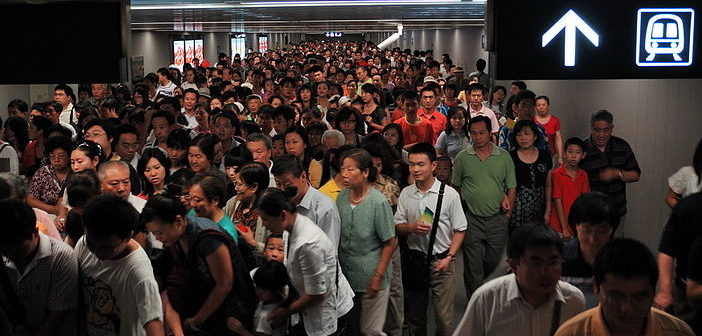In today’s #AtoZChallenge in China, we continue talking about trains, but this time they’re underground the massive city that is Beijing.


U is for Underground Trains in Beijing
- The whole network is called Běijīng dìtiě 北京地铁 (Beijing Subway) composed of 19 lines, 345 stations (70 are above the ground), and 574km of track in operation as of 2016.
- Its first subway line opened in October 1st, 1969, making it China’s oldest subway network. It took 39 years — or the time of the 2008 Beijing Summer Olympics — before Beijing had a line going to the capital airport. Since then, the network grew rapidly with 11 lines built in a span of 8 years after the Olympics.
- It’s massive and the busiest subway network in the world. According to the Beijing Municipal Commission of Transport, the Beijing Subway’s annual ridership amounted to 3.66 billion in 2016, with more than 10 million people riding the trains every day.
- Its busiest lines are Line 10 (the loop along the Third Ring Road), Line 4, Line 13 (the overground line), and Line 5, with authorities saying these lines “are all overloaded, sometimes at 120 percent of planned capacity.”

- Plans to add more subway lines are underway. Construction on four new networks to link Beijing to Hebei Province in 2021 has already begun, according to China’s National Development and Reform Commission.
- The Beijing Subway uses the yīkǎtōng 一卡通 contactless fare smart card, similar to the Oyster Card of London’s transport system, the Octopus Card of Hong Kong and the Beep Card of Manila’s MRT/LRT. Yīkǎtōng, which literally means “one card pass,” can be also used for buses, public bikes, and the Airport Transport Express. The card can be bought with a RMB 20 deposit (and can be returned at selected stations) and be topped up in units of RMB 10 in reloading machines at subway stations.

- Upon the development of the subway system, Chinese officials demolished the inner walls and gates of Beijing’s city fortifications. Some subway stations were named after the demolished gates like Xizhimen and Dongzhimen.
- And speaking of names, many of the stations have interesting meanings.
- For example, the station nearest to my neighborhood is Line 10’s Shuangjing 双井, which means “Double Well” — and never did I see any double wells here!
- One of the busiest stations in the Central Business District is called Guómào 国贸 or National Trade (because near the station is Beijing’s World Trade Center)…
- Just north of Guomao is the Golden Terrace in the Glow of the Setting Sun — or what we call Jintaixizhao 金台夕照…
- And then there’s one on Line 15, Shunyi 顺义 or Smooth Justice…
- And Cholera Camp — or Huoying 霍营 on Line 8.
- The stations are notoriously crowded usually 8am-10am and 5pm-7pm, so you might need to prepare your survival instincts. In the morning, be prepared to smell something like putrid coming from the mouths of some Beijingers who didn’t brush their mouths or dizzying body odors from people who didn’t take a shower. Yikes.
- For tourists, there are stations that are just by or directly below some attractions. Line 1, for example, is what you will take when you want to visit the Forbidden City.

So there you go, those are the fun facts about the underground railway network in Beijing! With its continuous development, I’m sure there’ll be more interesting tidbits that I can share in the future.
Next on #AtoZChallenge in China: No Facebook, no Google, no everything? There’s a solution for it.
Featured photo via Wikimedia Commons. Beijing Subway logo and Beijing Subway extension plan from Wikimedia Commons. Yikatong photo from ECCS. Other photos are taken by me.
See more of my #AtoZChallenge: Chinese Adventure

You ain’t kidding, that thing is HUGE. I thought New York’s and London’s were big…
It is! London’s rush hour on the underground is relatively peaceful compared to Beijing’s!
it’s so much bigger than the new york subway it seems, ridership in the billions? where are all these people coming from? so unbelievable, is there even space to stand in those morning rush hours?
have a lovely day.
I actually am so amazed to know it’s more massive than New York’s. the station near my office alone serves over thousands of people every morning… and it’s so crowded at night.
Pingback:#AtoZChallenge in China: Zàijiàn (See You Again) – coolkid